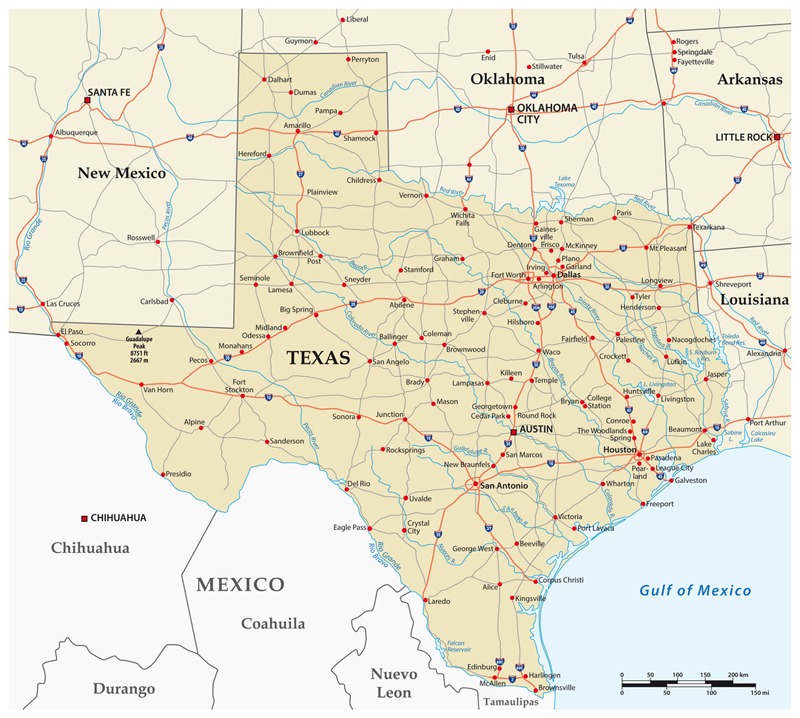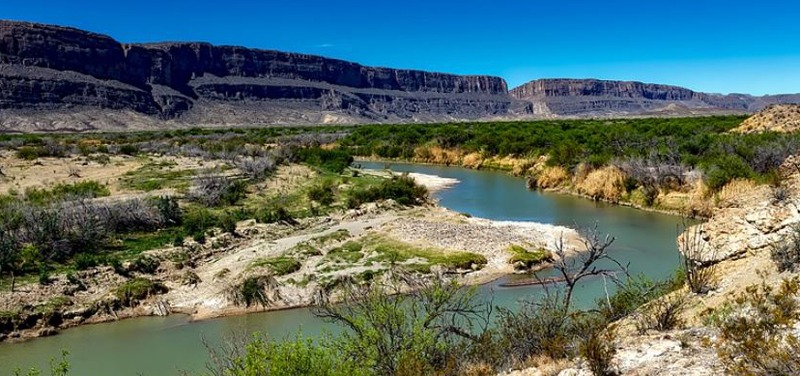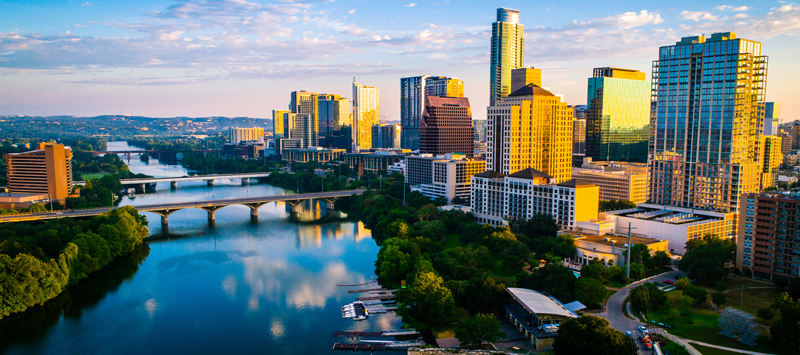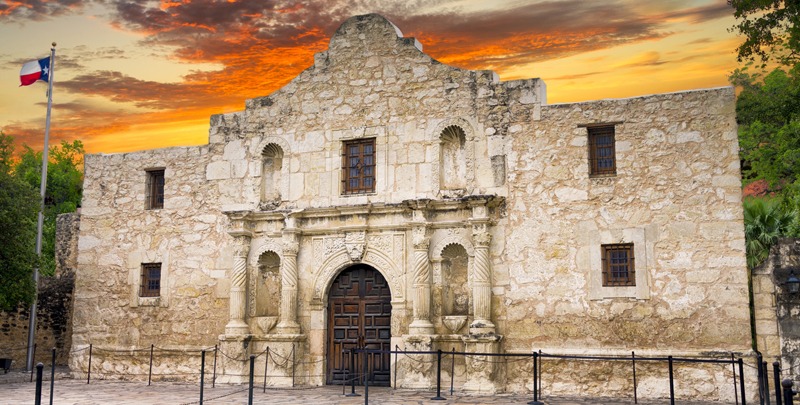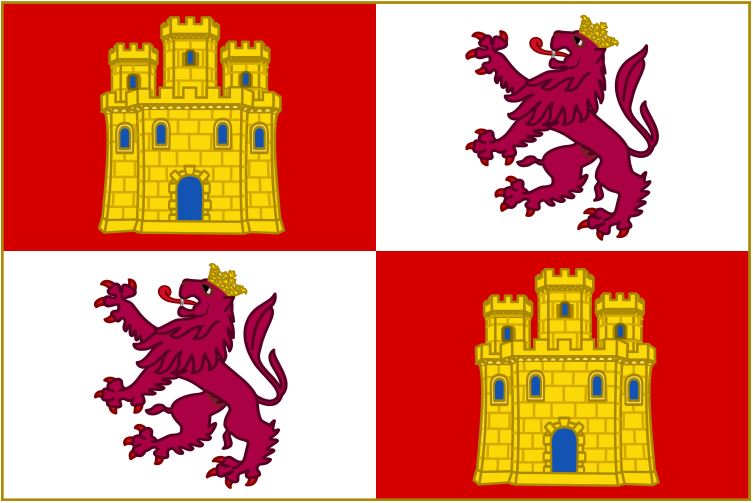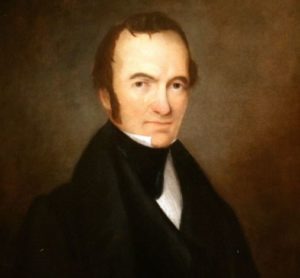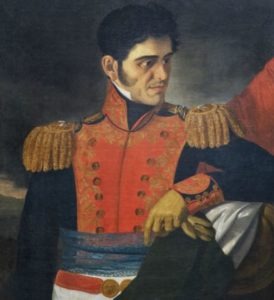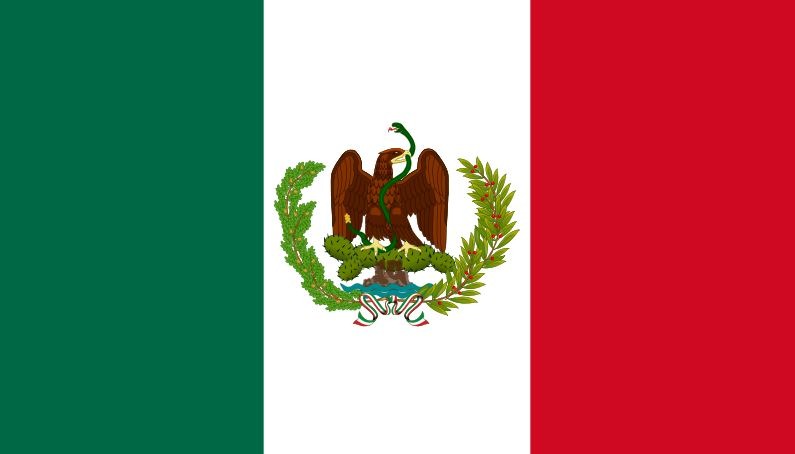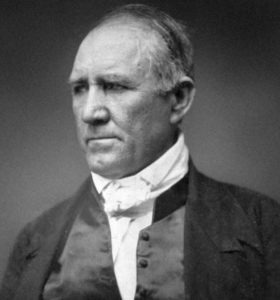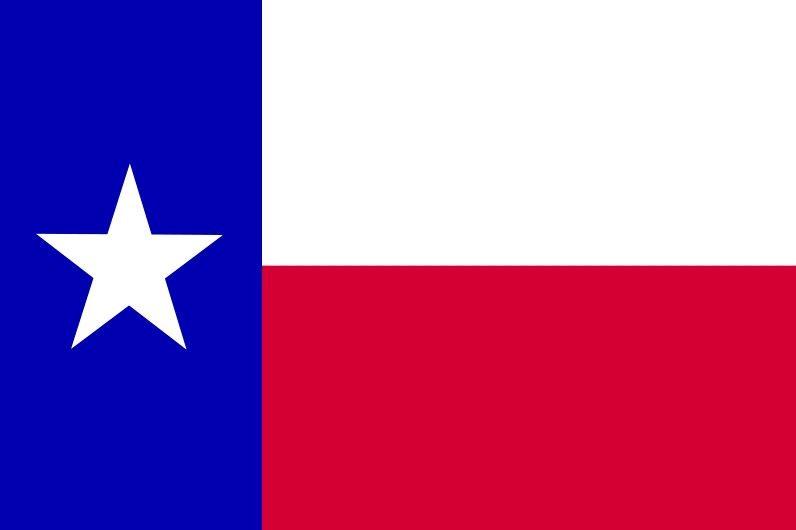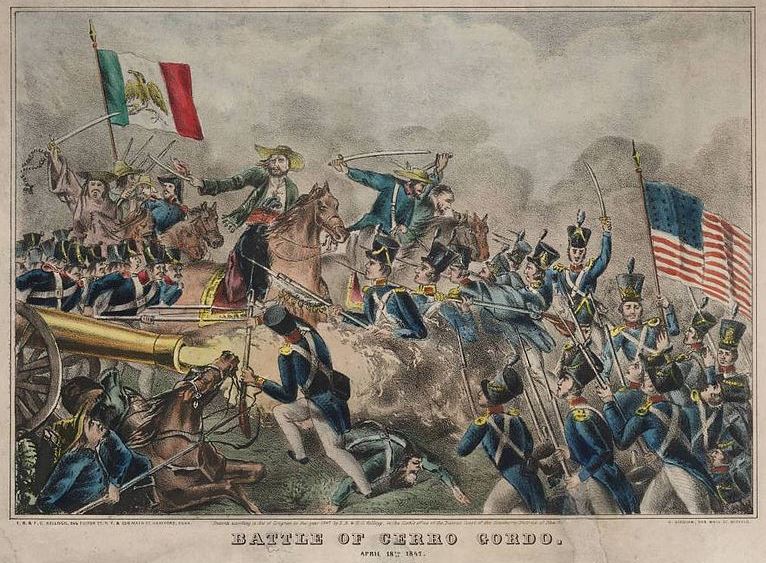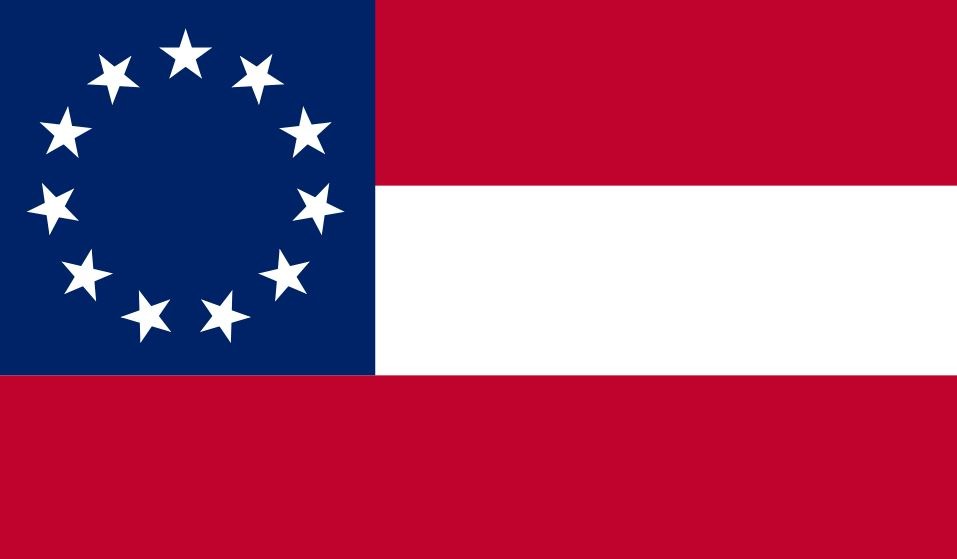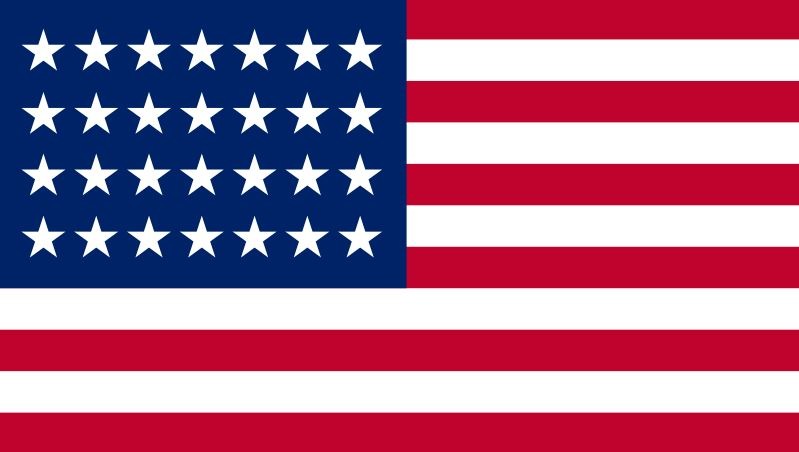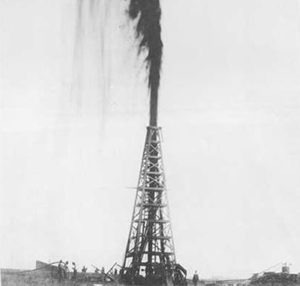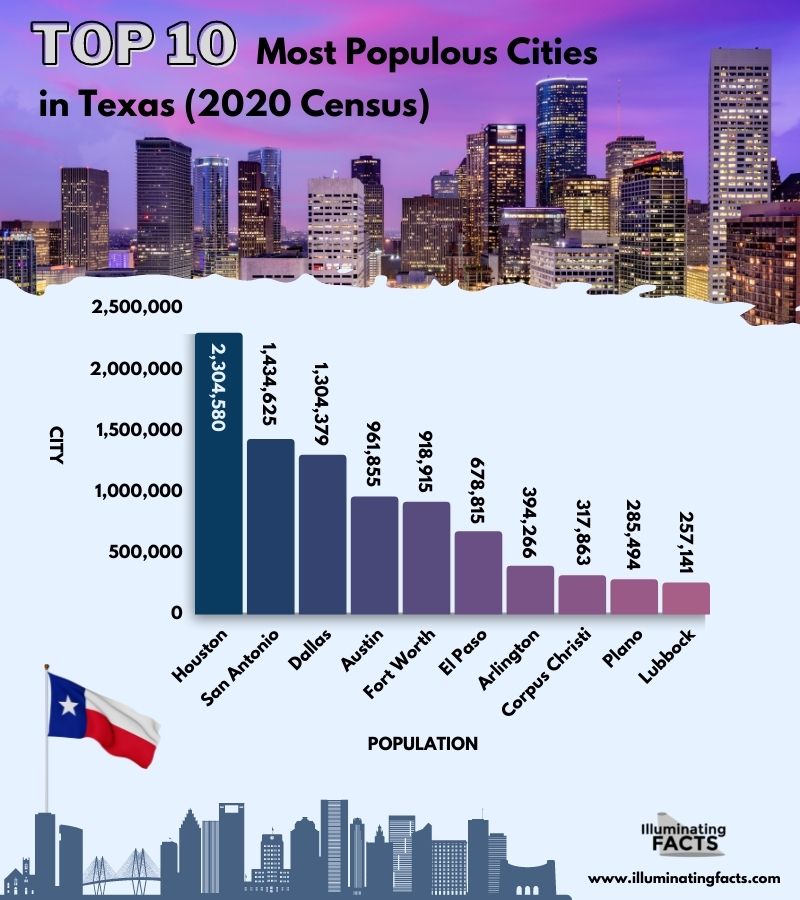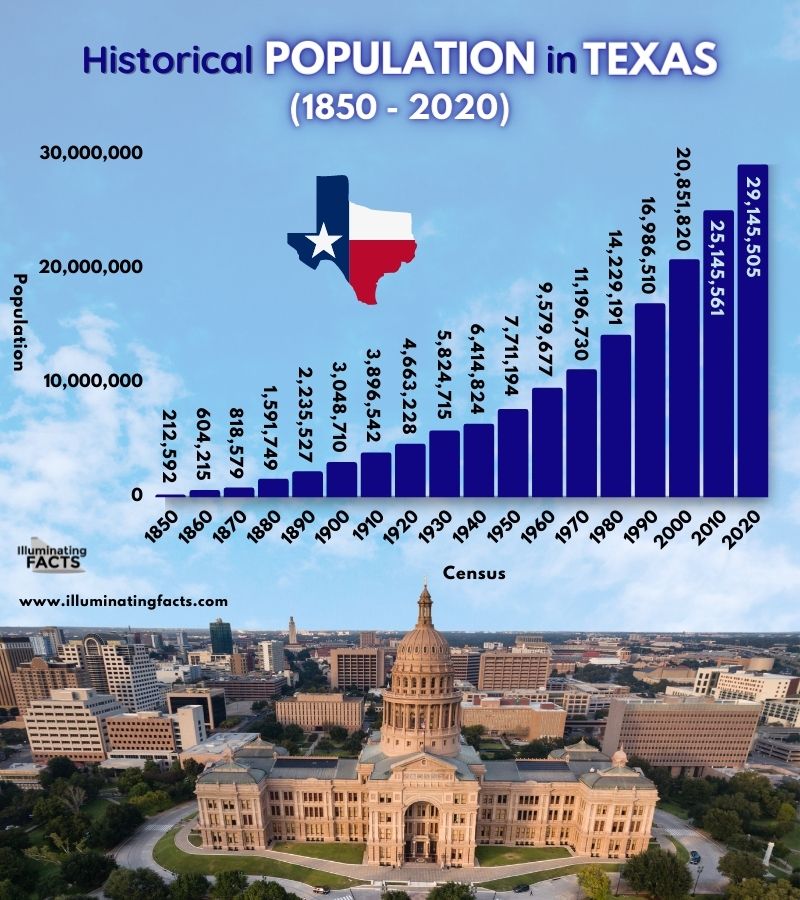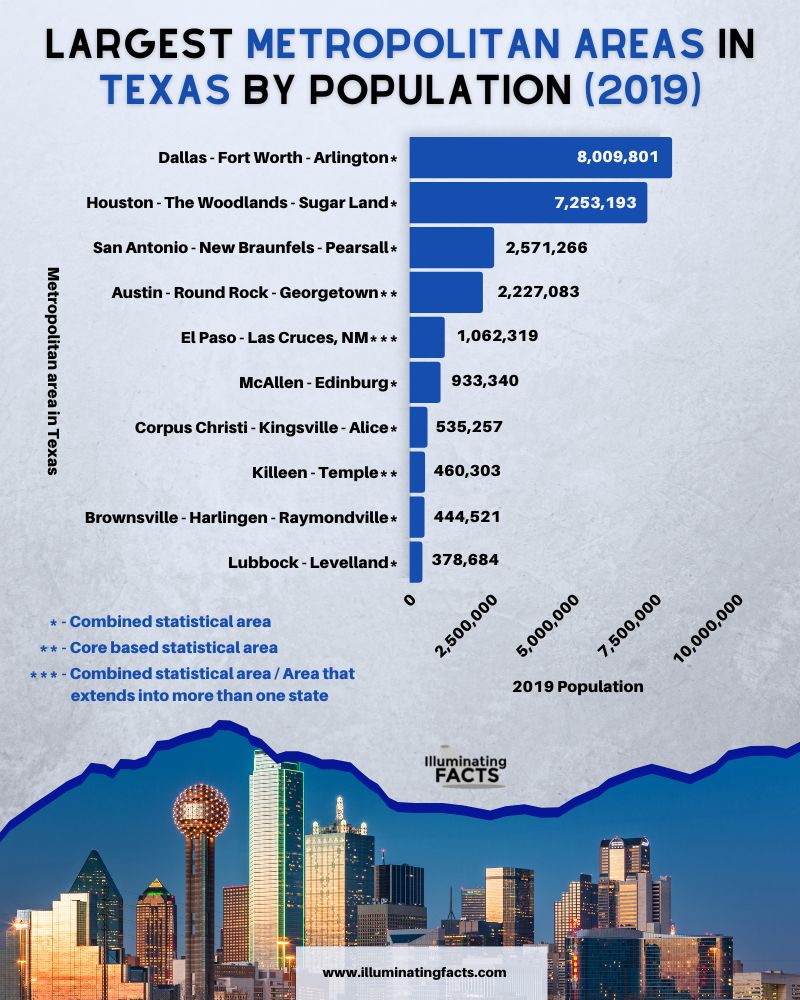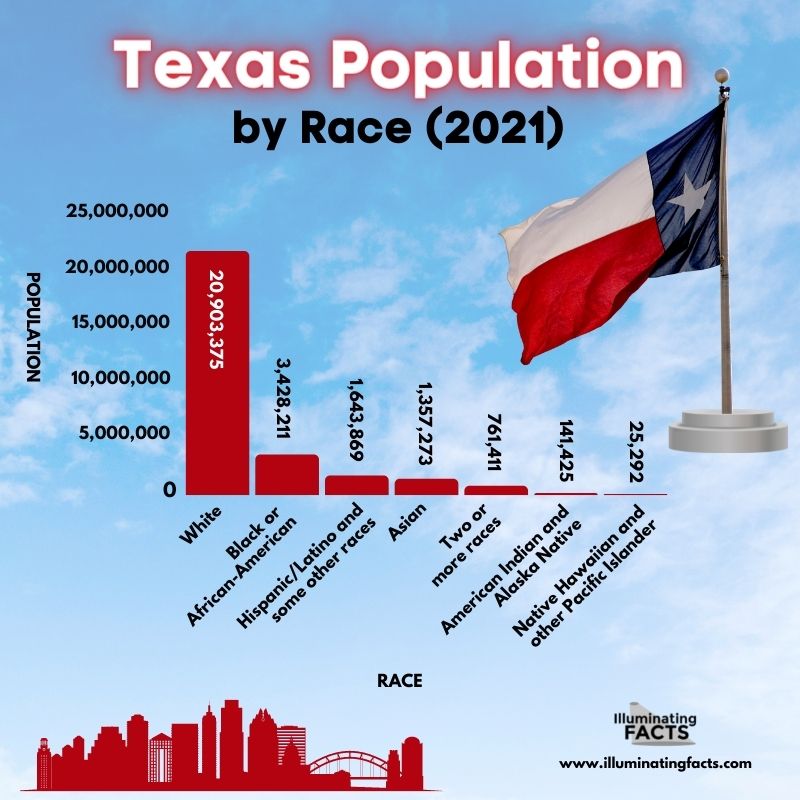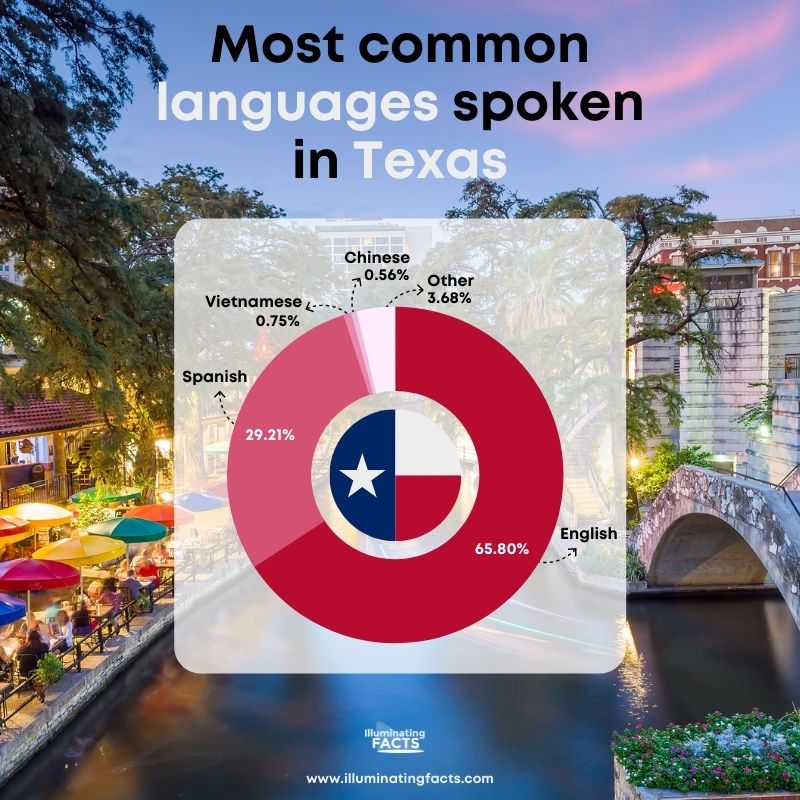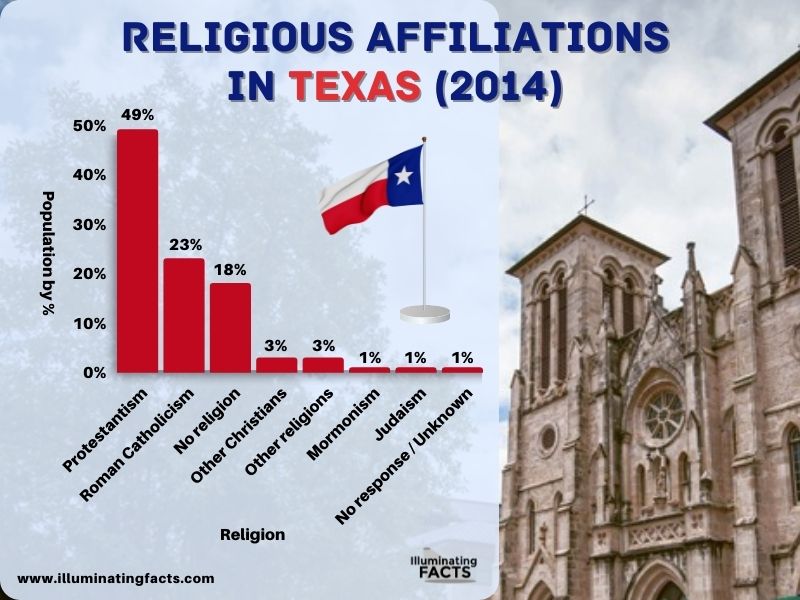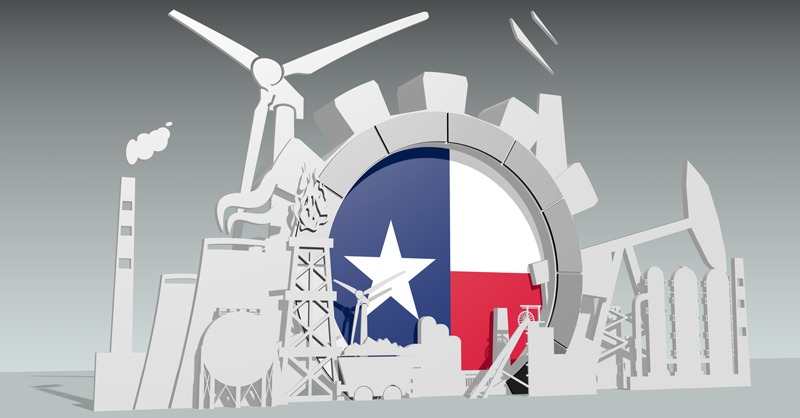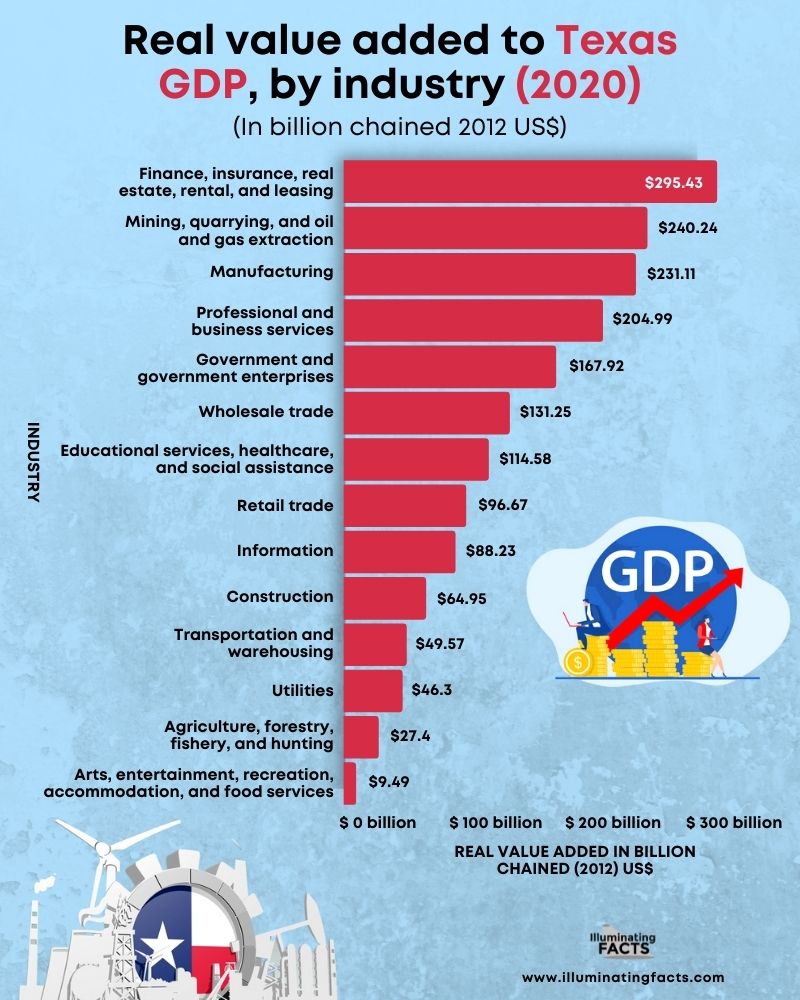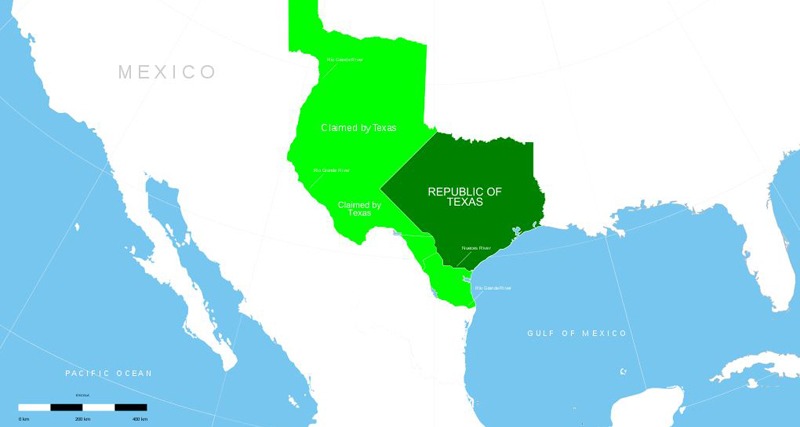Table of Contents
Introduction
Also known by its moniker “The Lone Star State,” Texas is the 28th state of the United States of America, located in the south-central region of the US mainland. At 268,596 square miles (695,662 square kilometers), Texas is the second-largest US state after Alaska in terms of land mass. As of 2020, Texas has over 29 million residents, making it the second-most populous US state after California.
Texas borders four other US states – Louisiana to the east, Arkansas to the northeast, Oklahoma to the north, New Mexico to the west – and the country of Mexico to the south.
Water also delineates many of Texas’ borders. The flowing course of the Red River serves as a border between Texas and Oklahoma to the north. The Rio Grande, on the other hand, separates Texas and Mexico to the south; true to its name, the Rio Grande (“big river” in Spanish) has a total length of around 1,900 miles (3,060 kilometers). The Sabine River serves as a border between Texas and Louisiana to the east. And finally, Texas is bordered by the Gulf of Mexico to the southeast.
Austin (pictured), located in the south-central part of Texas, is the state’s capital.
Houston (pictured) is the largest city in terms of population, with 2.3 million residents (as of 2020).
Besides being one of the biggest US states in terms of land and population, there are many other things that Texas is famous for, including oil and gas, rodeos, cowboys, barbecues, chilies, the Alamo, the hot weather, and country music. But there is so much more to Texas than you may usually see, read, and hear about.
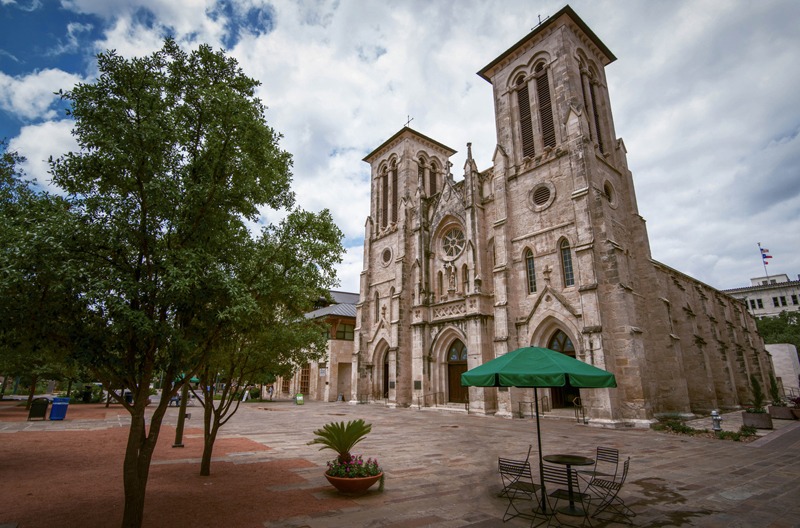
San Fernando Cathedral San Antonio

tornado on fields
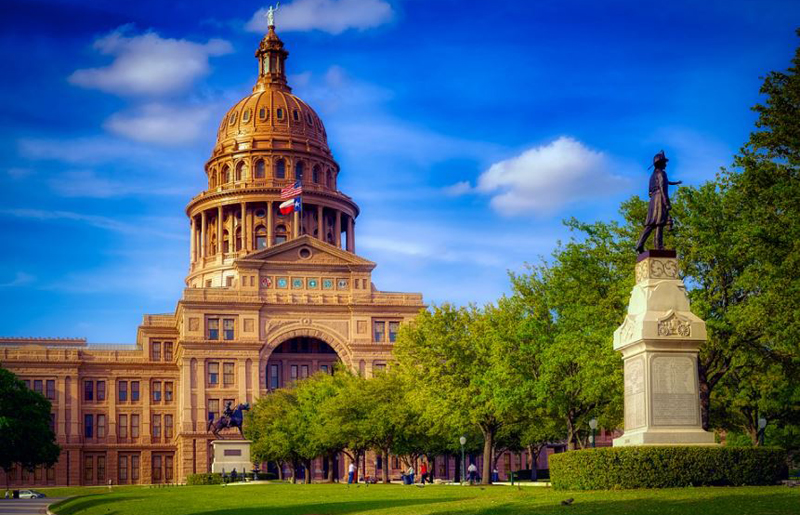
Texas State Capitol

Houston aerial photo
Texas is also distinct for its Hispanic heritage due to its long history with the Spanish and Mexicans, reflecting on its culture and the Texans’ way of life.
History
Pre-European era (pre-16th century)
The region that is known today as Texas was inhabited by several indigenous civilizations (the so-called “American Indians”) living between the Red River in the north and the Rio Grande in the south, just before the Europeans set foot in the territory. These tribes included Alabama, Apache, Caddo, Aranama, Comanche, Choctaw, Coushatta, Hasinai, Jumano, Karankawa, Kickapoo, Kiowa, Tonkawa, and Wichita.[1]
By the time the Europeans set foot in the Texas interior in the early 16th century, the area would then become sparsely populated. But the culture and habitation of the native American Indians exerted considerable influence on the later history of Texas.
Early exploration and arrival by the Europeans
The first recorded event of a European setting foot on the territory was in 1519, when the Spanish explorer named Alonso Álvarez de Pineda sailed around the Gulf of Mexico. In doing so, he explored and created the first map of what is now Texas and other parts of the US Gulf Coast.
Nine years later, in 1528, Álvar Núñez Cabeza de Vaca was shipwrecked on what is now believed to be Galveston Island. Together with his cohorts, who were also shipwreck survivors, they became the first Europeans in what is now Texas. He continued exploring the Texas interior on his way to Mexico.
From 1540 to 1541, while in search of the fabled Seven Cities of Cibola, another Spanish explorer named Francisco Vasquez de Coronado led an expedition into what is now the southwestern US and across northern Texas.
Texas under the French (1685 – 1690)

The flag that the French erected on the Texan soil was the royal banner for the Kingdom of France from 1684 to 1690 (below):
source: Zippanova, Public domain, via Wikimedia Commons
Spanish Texas (1690 – 1821)
From the end of the 17th century, the Spanish colonial era in Texas began with the spread of the Roman Catholic missions and presidios (fortified military settlements). Among the first Spanish missions were established near the present-day Texan cities of San Angelo, El Paso, and Presidio. In 1690, Texas became one of the interior provinces of the colonial Viceroyalty of New Spain. Most of the missions were managed by Franciscan friars who hoped to spread Christianity among the Indian natives. But the friendly relations between the Spaniards and the native peoples would be short-lived, as the latter had begun to distrust the white explorers and settlers. To make matters worse, the Spaniards spread diseases to the natives throughout the region.[2]
In the midst of the increasing turmoil and power struggle with the natives, the missions and presidios were a success for the Spaniards in some ways. Throughout the 18th century, Spanish Texas served as a buffer protecting the wealthier provinces to the south against rival European settlers and independent natives.
Spain continued establishing several missions across Texas. One of the most successful missions is the Misión San Antonio de Valero, famously known as the Alamo (pictured). It was built in San Antonio in 1718, which is the town’s founding. The Spanish government also built missions in other towns such as Goliad and Nacogdoches. They continued experimenting by building more missions for various Indian groups, but never with long-term success.
After the French ceded Louisiana to Spain after the French and Indian War (1754 – 1763), Spain transferred the capital of Texas to San Antonio. Spain returned its part of Louisiana to France in the Third Treaty of San Ildefonso in 1800. However, France sold it to the United States as part of the Louisiana Purchase of 1803.
Following the purchase, Spain sought to reinforce Texas to protect its Mexican colony from the United States. But despite Spain’s zealous mission efforts, they failed in their ultimate goal of Hispanicizing and converting the Indian natives. The Mexican War of Independence (1810 – 1821) further loosened Spain’s hold on Texas, which some Americans even alleged was part of the Louisiana Purchase.
Here is the Spanish flag that flew over Texas from 1519 to 1685 and 1690 to 1821.
source: Heralder, CC BY-SA 3.0, via Wikimedia Commons
Mexican Texas (1821 –1836)
When Mexico became independent from Spain following the end of the Mexican War of Independence in 1821, the population in what is now Texas mostly consisted of Indian natives.
Instead of enjoying its newfound independence, Mexico felt quite ill at ease for two reasons. One, the constant threats from the natives; and two, the possibility that the United States might take over Texas. Thus, the Mexican government swiftly enacted policies to encourage more people to settle in Texas as part of its plan to develop the area. That way, the new country could better implement its control over the region.
The Mexican government began to work with empresarios. Historically, an empresario was a land agent or real estate contractor working under Mexico’s colonization system.[3] The empresario’s job was to bring in settlers to Texas for the Mexican government as part of its colonization efforts. In exchange for their services, empresarios were granted land titles – and Texas had an abundance of land.
The best-known and most successful empresario was Stephen F. Austin (pictured), who brought 300 families to settle in Texas. These 300 families, sometimes known as the “Old Three Hundred,” arrived in 1822 and settled along the Brazos River, from the Gulf of Mexico to present-day Dallas. Most people who came to Austin’s settlements were American cotton farmers. Many brought slaves with them to work their new lands. Despite the series of laws abolishing slavery in Mexico in the 1820s, the Mexican government granted a temporary exception to the ban in Texas, allowing more new settlers to bring slaves with them.
By the 1830s, the Texian (Anglo settlers in Texans) and Tejano (Hispanic or Latino residents in Texas) populations had increased. But despite becoming official residents of Mexico, many of the citizens still held an affinity towards the United States. As a result, Texas became a breeding ground for animosity between the United States and Mexico. The Mexican attempted to enforce control over Texas through various measures, such as forcing the end of slavery in the region, imposing taxes, and ending immigration from the United States. Mexico became involved in small civil wars with the settlers as it was struggling to maintain its power over the region.
Relations between the Mexican government and the Texan settlers deteriorated significantly in 1834 – 1835 as President Antonio López de Santa Anna (pictured) repealed the Mexican Constitution under which American settlers had agreed to live. In the summer of 1835, Santa Anna dispatched a small army to Texas to confront the rebellious settlers, including many new Texians and some Tejanos dissatisfied with the direction of Santa Anna’s administration.
The unrest erupted into an armed conflict on October 2, 1835, at the Battle of Gonzales, where the Texans successfully staged a resistance against a Mexican attempt to retrieve a small cannon. This incident launched the Texas Revolution. This revolution ended in 1836 with the formal declaration of Texas’ independence[4] , effectively establishing the Republic of Texas.
Here’s the Mexican flag that flew over Texas from 1821 to 1836:
source: Ludovicus Ferdinandus. Elementos de Sodacan yHeralder., CC BY-SA 3.0, via Wikimedia Commons
The Republic of Texas (1836 – 1846)
Most US states today were, at one point, territories of the US., acquired over time and eventually admitted to the Union. But Texas is the only US state that actually existed as an independent republic before joining the Union.
An army general named Sam Houston (pictured) was elected as the republic’s new president; Stephen F. Austin was appointed as his secretary of state. Cities were named in their honor; Houston was the capital until 1839, when Austin was made the permanent capital.
Texas, a nation for a brief time, went through a turbulent crisis. The republic emerged as a rowdy frontier nation brimmed with political turmoil, continuing conflict with the Indian natives and the Mexicans, and an unstable economy. Despite being independent from Mexico, Texas was still regarded by the Mexican government as a rebellious province during the latter’s brief existence as a republic.
Here’s the flag of the Republic of Texas, which is identical to the present state flag:
source: This vector image includes elements that have been taken or adapted from this file: Flag of Texas.svg., Public domain, via Wikimedia Commons
Annexation and statehood (1846) and the Mexican-American War (1846 – 1848)
Texas’ road to annexation and statehood to the United States began as early as 1836, but its first propositions were rejected by the Andrew Jackson and Martin van Buren administrations. Great Britain was in favor of Texas’ independence in order to prevent the United States from going into further expansion westward. However, this attitude only fueled the Americans’ push for the annexation.
Congresses from both Texas and the US approved the annexation in 1845. The transfer of authority from the republic to the state of Texas occurred a year later.
But the US annexation of Texas and disputes with the Mexicans over the area between the Rio Grande and the Nueces River caused the Mexican-American War in 1846. American troops invaded Mexico in February 1847 and Major General Winfield Scott captured Mexico City in September the same year. The armed conflict ended in 1848 with a decisive American victory, leading to the Treaty of Guadalupe Hidalgo, which signaled the end of Mexico’s claim over Texas. Mexico also ceded the area that is now the present-day US states of New Mexico, Utah, Nevada, California, Arizona, and western Colorado. Texas claimed most of this additional area but surrendered it during the Compromise of 1850.
Secession from the Union (1861)
During the American Civil War between the Union and the Confederacy, Texas seceded from the Union in February 1861 and joined the Confederate States the following March. Sam Houston was vocal in his opposition against the secession. After he refused to take an oath of allegiance to the Confederacy, Houston was removed from office[5]. During the war, Texas had to defend itself from the natives, the Mexicans who still refused to recognize its independence, and the Federal forces, who made their way to the lower Gulf Coast but could not reach far inland.
Here is the Confederate States flag that flew over Texas:
Readmission to the Union (1865) and the modern period
Following the Confederates’ defeat in the American Civil War in 1865, Texas and other Southern states were occupied by the Union forces during the Reconstruction era. Texas had to meet several conditions to be readmitted to the Union, including adopting a new state constitution and ratifying both the 14th and 15th Amendments to the Constitution that would grant full citizenship and equal rights to the former slaves.
During the last decades of the 19th century, Texas saw rapid economic development and population growth. Under the new constitution, the state was fully readmitted to the Union in 1870.
Here’s an earlier US flag flown in Texas (1846 – 1847) with 28 stars (with Texas being the 28th state):
And here’s the US flag that has been flying over Texas from 1865 to the present:
Texas’ population growth was helped by an influx of immigration and the establishment of several towns and communities. Farming spread throughout Texas’ central area, and the cattle industry began to thrive on the West Texas plains. Like many other US states at the time, Texas experienced significant economic and population growth with the arrival of railroads. Shipping on the Gulf’s coast developed and increased, creating new links with the rest of the world.
But the discovery of oil [6] by the turn of the century opened a whole new economic era for Texas, launching the “Texas oil boom” or “gusher age.” This led to the establishment of several oil companies in Texas. The new oil boom spurred prospective oilmen to search for and find new oil deposits. Refining and marketing provided new employment opportunities to Texans and brought in immense income to the state.
After Texas suffered during the Great Depression, it bounced back thanks to the massive industrial expansion that took place during World War II.
Economic and population growth continued from the postwar era onwards. While oil refining, chemicals, and petrochemicals continue to dominate Texas’ economy, recent players such as electronics, aerospace components, and high-technology products and services become increasingly important towards the end of the 20th century and up to the 21st century.
Texas history timeline
Here are some of the most important events that have shaped the state of Texas from the pre-European era to the present:
Demographics
Population
Since Texas became a state, its population has grown and become increasingly diverse. Its recent population growth exceeds that of all the other states in the US.
The top ten cities in Texas in terms of population (as of 2020):
Data source: https://www.texas-demographics.com/cities_by_population
Here’s a chart featuring Texas’s historical population from 1850 to 2020 by the decade:
Data source: https://www.census.gov/data/tables/time-series/dec/popchange-data-text.html
From 212,592 in the 1850 census, the number of Texas residents has increased to 25,145,505 in the 2020 census.
Below are the biggest metropolitan areas in Texas by population (2019):
Data source: https://www.statista.com/statistics/183600/population-of-metropolitan-areas-in-the-us/
Race and ethnicity
In 2021, non-Hispanic whites made up the majority of the Texas population – 20,903,375. They were followed by blacks (African-Americans) by a wide margin, and then Hispanics or Latinos (of any race) and some other race – which may mean a combination of Native Americans or people of two or more different races – Asian-Americans, and other racial minorities.
Below is a chart of the Texas population by race (2021):
Data source: https://worldpopulationreview.com/states/texas-population
Languages
The most common language spoken in Texas is English, in the Texan accent or dialect usually called “Texas English.” Texan English is itself a variety of broader categories of American English, usually known as Southern American English.
The United States is basically a land of immigrants, and Texas is probably the biggest “melting pot” in the country because of its concentration of racially diverse populations and various cultures. Due to its Spanish and Mexican history and its present proximity to Mexico, Spanish is the most common non-English language spoken in Texas.
Recent immigrants from other US regions and foreign countries have caused a linguistic shift in Texas, with Asian regional languages rising.
Here’s a table of the most common languages in Texas (2010 census):
Data source: https://data.census.gov/cedsci/table?q=Texas%20languages&tid=ACSDT1Y2019.B16002&hidePreview=false
Religion
Texas is considered to be one of the most religious states in the US. The majority of Texans are Christians. Due to years of Spanish and Mexican occupations in the past, Roman Catholicism has been deeply rooted in Texan culture and way of life. The initial Roman Catholic missionaries were first built in Texas together with the Spanish conquistadores who intended to claim the region as part of the Spanish crown. Roman Catholicism remains the largest single Christian denomination in Texas, with the largest Catholic jurisdictions in the state including the Roman Catholic Archdiocese of Galveston-Houston, the dioceses in Dallas, Fort Worth, and the Roman Catholic Archdiocese of San Antonio.
However, Protestant colonialism and missionary work are also responsible for Texas’ long history with Protestantism. It has been influenced by the Evangelical Bible Belt – a region in the Southern US with a socially conservative Christian population.
Non-Christian religious affiliations comprise about 4% of Texas’s population, while people with no known religious faith account for 13% of the state’s population (in 2014 numbers).
Here’s a chart representing Texas’ religious affiliations (2014):
Data source: https://www.pewforum.org/religious-landscape-study/state/texas/
Economy
Texas has the country’s second-largest gross domestic product (GDP) after California. In fact, if Texas were a country, it would have been placed as the tenth-largest economy in the world, ahead of South Korea and Canada but behind Brazil.
As of 2020, it has a gross state product of $1.776 trillion. Texas is home to six of the top 50 companies on the Fortune 500 list.
Texas’ long-standing ties to the energy sector have helped keep the state’s economy afloat. It’s no wonder that after the 2009 recession, this sector helped Texas’ economy turn around sooner than expected, helping drive employment and income expansion amid the oil and gas price increase. Technology, on the other hand, helped bring in more hardware and software firms in Texas, managing to lure them from California.
Other strong sectors include finance, manufacturing, agriculture, construction, healthcare, tourism, and entertainment.
The retail trade, professional services, leisure, hospitality, and health care remain the biggest employment sectors in Texas, just like the rest of the United States. While these sectors have never shown significant growth, they remain the backbone of Texas’ economy and represent most of the state’s jobs and income.
Here are the top industries that drive Texas’ GDP growth (2020):
Data source: https://www.statista.com/statistics/304890/texas-real-gdp-by-industry/
20 Interesting and fun Texas facts
1) Texas is the only state in the US that existed as an independent nation, the Republic of Texas, from 1836 to 1846.
2) Your favorite bar drink, the frozen margarita, originated in Texas. Mariano Martinez invented the first frozen margarita machine in Dallas in 1971.[7]
3) Dr Pepper was invented in Waco, Texas, in 1885 (note that the “Dr” doesn’t have a period).
4) Texas uses its own power grid, separate from the rest of the United States. It was established during the Second World War to ensure that all Texas factories producing war supplies were self-sufficient.
5) Aside from being Texas’ capital, Austin is also the “Live Music Capital in the World,” with the most live music venues per capita in the US. It is home to more than 1,900 bands, musical artists, and over 250 concert venues.
6) Texas is the most tornado-prone state in the US, averaging about 139 twisters annually.
7) Texas is home to the largest known bat colony in North America. The Bracken Cave, located in southern Comal County, outside San Antonio, houses an estimated 20 million bats. The largest urban bat colony is also located in Texas, but this time it’s over Lady Bird Lake in Austin.
8) The word “Texas” means “friends,” originating from a Hasinai word for “friends” or “allies.” It was named by the natives who lived in the region before the Europeans arrived. That explains Texas’s state motto, “Friendship,” the quality that is true for most Texans!
9) Texas owns all of its public lands, which basically means that the US government must ask permission from the state to build anything on it.
10) If California has Silicon Valley, Texas has “Silicon Hills.” Texas is home to several high-tech companies, including the homegrown Dell Inc., as well as a variety of startup companies.
11) Planning a wine tour? Forget Napa Valley in California. Texas is, in fact, the fifth-largest wine-producing state in the country, thanks to its “wine countries” in north, west, and central Texas. The state’s generally sunny and dry climate is ideal for producing wines, which often draw a comparison to Portuguese wines.
12) In the need for speed? You can achieve that on the Texas State Highway, which stretches between San Antonio and Austin. On this road, you can drive up to 85 miles per hour – the highest speed limit in the entire US.
13) Texas is not without its strange laws. One of them is a law that prohibits shooting a buffalo from the second floor of a hotel. This law may not have been so strange if there were plenty of buffalos, but there aren’t a lot of buffalos today roaming the streets in Texas.[8]
14) Texas is one of the 15 states that have official seashells. The state’s official seashell is the lightning whelk.
15) The Six Flags amusement parks are named after the six flags erected by the states that have had sovereignty over Texas – Spain, France, Mexico, the Republic of Texas, the Confederate States, and the present United States.
16) The Texas State Capitol in Austin is the largest capital in the US. In fact, its dome stands seven feet (2.13 meters) higher than the iconic US Capitol in Washington, D.C. The building is made of pink granite.
17) The hurricane that slammed Galveston, Texas, in 1900 remains the deadliest natural disaster in US history. The death toll reached up to around 8,000.[9]
18) The King Ranch in South Texas covers 1,289 square miles (3,338 square kilometers) – that’s a lot bigger than the entire state of Rhode Island, which is 1,212 square miles (3,139 square kilometers).
19) Texas is a lot bigger than any country in Western Europe.
20) The designer of Texas’ flag is unknown. There are claims that Dr. Charles B. Stewart, a doctor, and pharmacist from Montgomery, Texas, was the flag’s designer, but no one knows who designed it. Stewart’s sketch of the flag was used when it was enacted for legislation, but the true identity behind the flag’s design remains a mystery.[10]
References
[1] Texas State Library and Archives Commission (n.d.). “Native American Relations in Texas.” Available on: https://www.tsl.texas.gov/exhibits/indian/intro/page2.html [accessed November 23, 2021]
[2] Harriet Denise Joseph and Donald E. Chipman, 1996, 2021. “Spanish Texas.” Texas State Historical Association. Available on: https://www.tshaonline.org/handbook/entries/spanish-texas [accessed November 23, 2021]
[3] Eugene C. Barker, 1952, 2020. “Empresario.” Texas State Historical Association. Available on: https://www.tshaonline.org/handbook/entries/empresario [accessed November 23, 2021]
[4] Texas Happens (n.d.). “The Texas Declaration of Independence.’ Available on: https://texashappens.com/the-texas-declaration-of-independence/ [accessed November 23, 2021]
[5] History.com (n.d.). “Texas Secedes”. Available on: https://www.history.com/this-day-in-history/texas-secedes [accessed November 23, 2021]
[6] Mary G. Ramos, “Oil and Texas: A Cultural History.” 2000, 2001. Texas Almanac. Available on: https://www.texasalmanac.com/articles/oil-and-texas-a-cultural-history [accessed November 23, 2021]
[7] Blender Adviser (n.d.). “The History of the Margarita.” Available on: https://blenderadviser.com/the-history-of-the-margarita-a-favorite-frozen-drink/ [accessed November 23, 2021]
[8] Law Office of David A. Breston, Criminal Defense Attorney, 2016. “The 10 Most Absurd Laws in Texas”. Available on: https://houston-criminalattorney.com/the-10-most-absurd-laws-in-texas-2/ [accessed November 23, 2021]
[9] Mary Wasson, 2021. “The Great Galveston Storm: The deadliest hurricane in U.S. history.” Spectrum News 1. Available on: https://spectrumlocalnews.com/tx/south-texas-el-paso/weather/2021/09/08/galveston-storm-of-1900–a-look-back-at-the-deadliest-storm [accessed November 23, 2021]
[10] US Flag Supply (n.d.). “Texas’s Flag History.” Available on: https://www.usflagsupply.com/u.s.-state-flag-history/texass-flag-history.html [accessed November 23, 2021]


